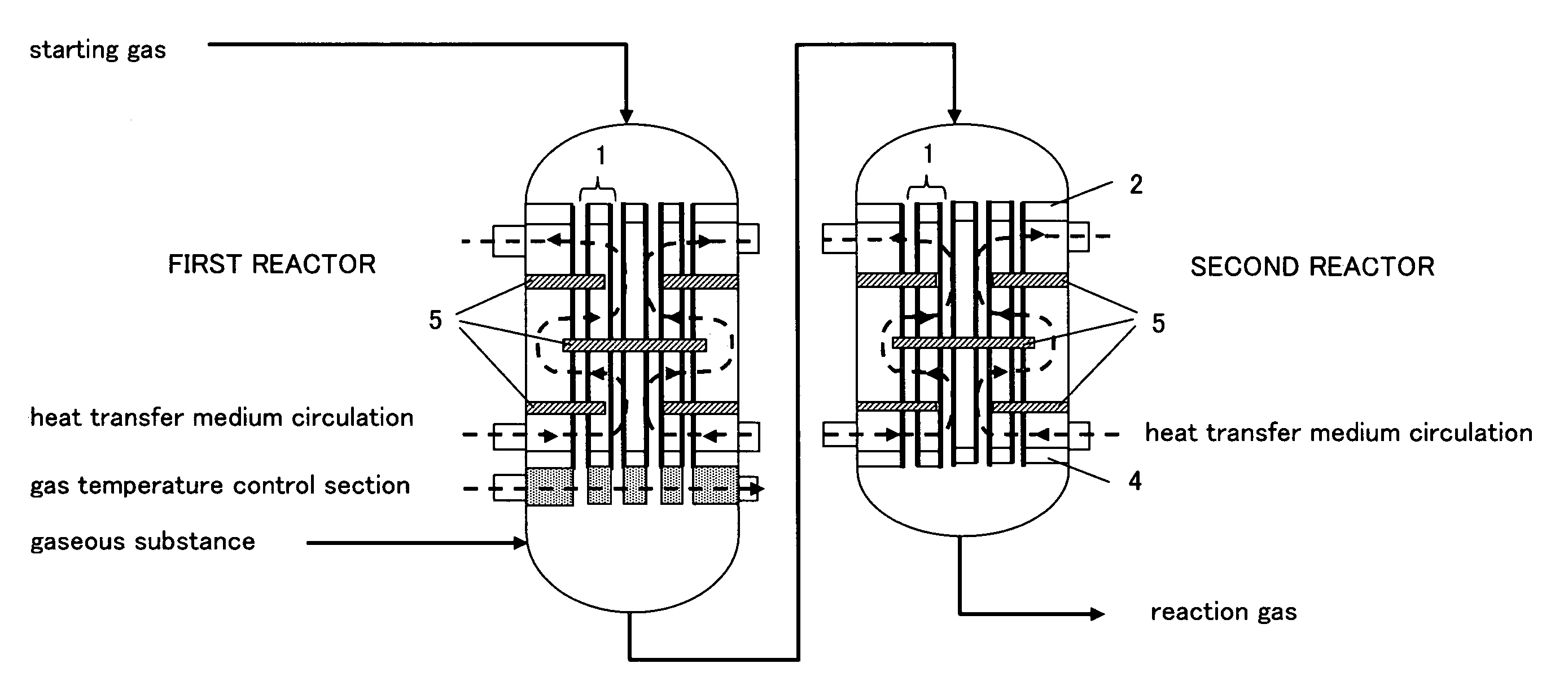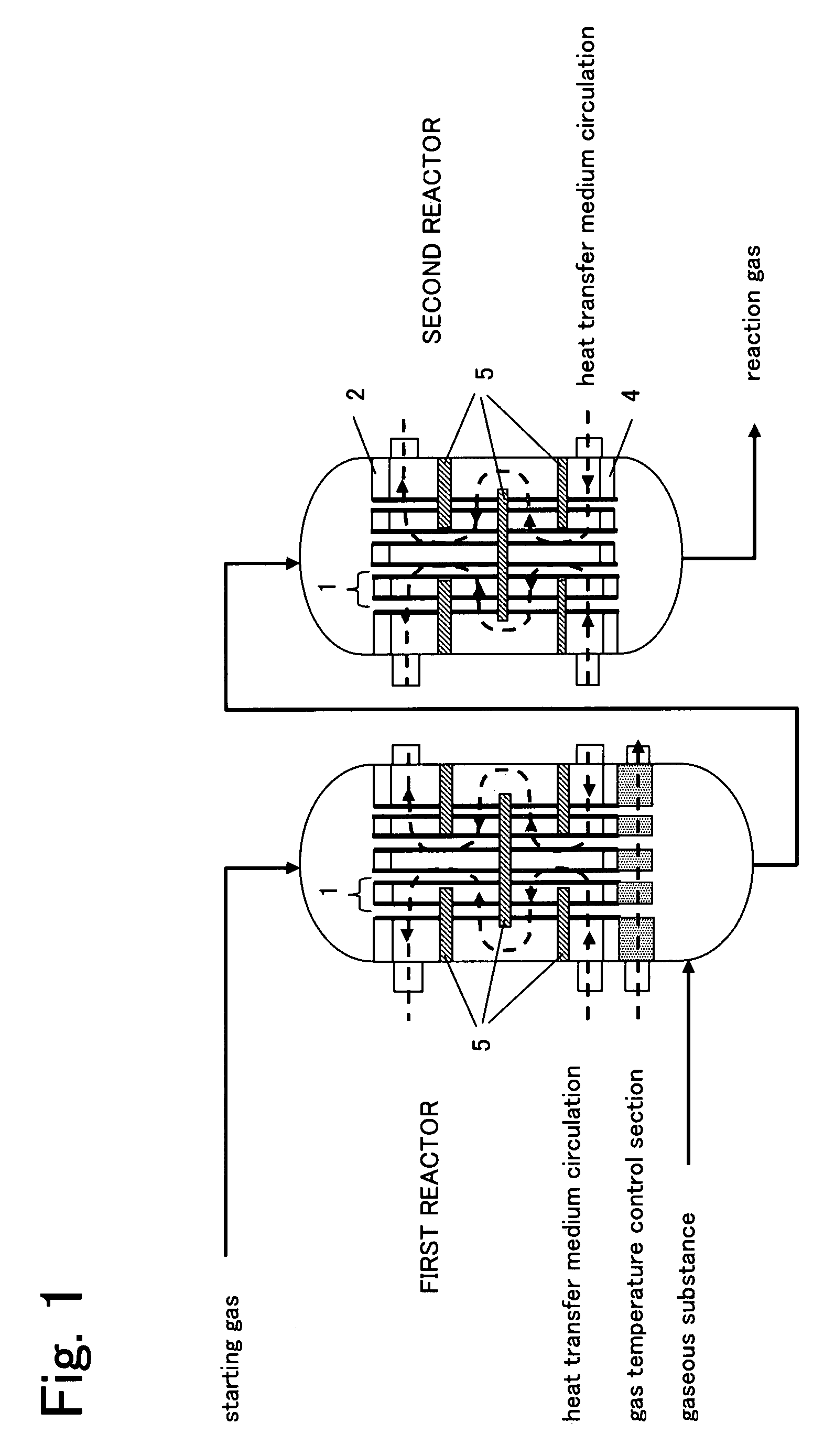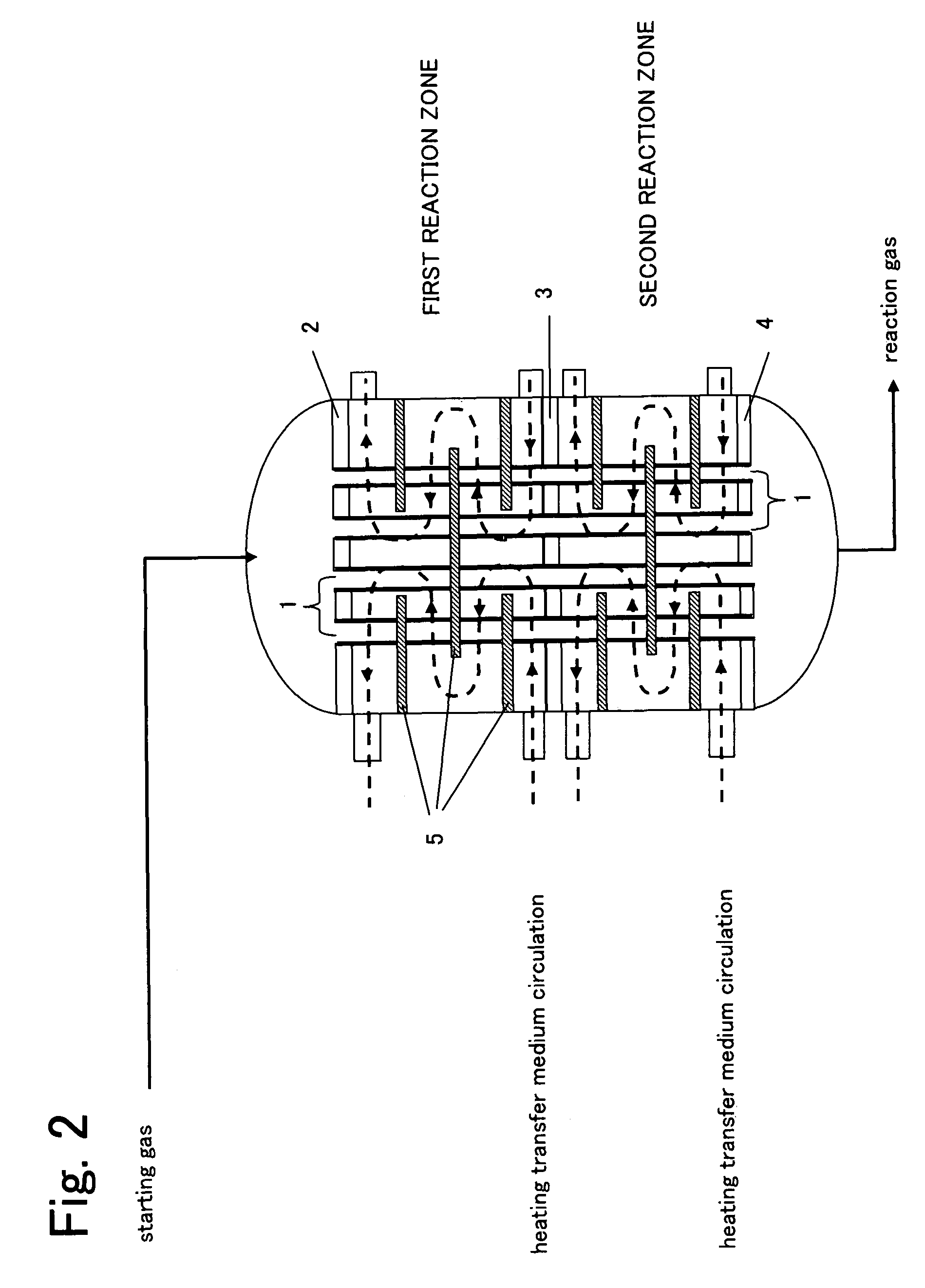Reactor for gas phase catalytic oxidation and a process for producing acrylic acid using it
a technology of catalytic oxidation and heat exchanger, which is applied in the direction of metal/metal-oxide/metal-hydroxide catalyst, physical/chemical process catalyst, instrument, etc., can solve the problems of large floor area for their installation, large equipment requirements, and large installation costs of the reactor. achieve the effect of high efficiency
- Summary
- Abstract
- Description
- Claims
- Application Information
AI Technical Summary
Benefits of technology
Problems solved by technology
Method used
Image
Examples
example 1
[Preparation of the First Stage Catalyst 1]
[0062]In 300 parts of distilled water, 192.6 parts of ammonium molybdate and 42.2 parts of ammonium paratungstate were dissolved under heating and stirring. Into this solution a liquid mixture of three nitrate solutions obtained respectively by dissolving 79.4 parts of cobalt nitrate in 30 parts of distilled water, 40.4 parts of ferric nitrate in 40 parts of distilled water, and 52.9 parts of bismuth nitrate in 60 parts of nitric acid which had been made of distilled water and 10 volume parts of concentrated nitric acid, was dropped. Successively, 0.234 part of potassium hydroxide as dissolved in 15 parts of distilled water was added. The resultant suspension was heated under stirring and evaporated. The residue was molded and calcined for 8 hours at 460° C. under air flow, to provide a catalyst. The metallic composition of this catalyst was as follows, in terms of atomic ratio:
Mo12Bi1.2Fe1.1Co3K0.05W2.
[Preparation of the Second Stage Catal...
example 2
[Preparation of First Stage Catalyst 2]
[0077]Into 1,000 parts of distilled water, 385.2 parts of ammonium molybdate and 39.3 parts of ammonium paratungstate were dissolved under heating and stirring (solution A). Separately, 264.6 parts of cobalt nitrate was dissolved in 140 parts of distilled water (solution B); 80.8 parts of ferric nitrate, in 80 parts of distilled water (solution C); and 105.8 parts of bismuth nitrate was dissolved in 100 parts of nitric acid which had been made of 100 volume parts of distilled water and 20 volume parts of nitric acid (60%) (solution D). These three kinds of nitrate solutions (solutions B, C and D) were dropped into the solution A. Successively, 0.469 part of potassium hydroxide as dissolved in 30 parts of distilled water was added. Thus obtained suspension was heated, stirred and evaporated, molded into a size of each 8 mm in outer diameter, 3 mm in inner diameter and 7 mm in length, and calcined at 460° C. for 8 hours under an air flow to provi...
example 3
[0092]The reaction was operated under the same conditions as Example 2, except that the additional gas inlet pipe was disposed at a tangential direction to the reactor (cf. FIGS. 3 and 5(c)). The result was as shown in Table 1.
[0093]When condition of the reactor after 4000 hours' operation was examined, deposition of carbides was observed on the catalyst layers over a length of 10 mm from the entrance of the second reaction zone. Thereafter an aeration was carried out under the same conditions as Example 2, and after that removal of the carbides without rapid rise in temperature at the catalyst layer was confirmed. The pressure loss also returned to the level at the incipient period of the reaction. The performance evaluation after that treatment is also shown in Table 1.
PUM
| Property | Measurement | Unit |
|---|---|---|
| Temperature | aaaaa | aaaaa |
| Temperature | aaaaa | aaaaa |
| Temperature | aaaaa | aaaaa |
Abstract
Description
Claims
Application Information
 Login to View More
Login to View More - R&D
- Intellectual Property
- Life Sciences
- Materials
- Tech Scout
- Unparalleled Data Quality
- Higher Quality Content
- 60% Fewer Hallucinations
Browse by: Latest US Patents, China's latest patents, Technical Efficacy Thesaurus, Application Domain, Technology Topic, Popular Technical Reports.
© 2025 PatSnap. All rights reserved.Legal|Privacy policy|Modern Slavery Act Transparency Statement|Sitemap|About US| Contact US: help@patsnap.com



